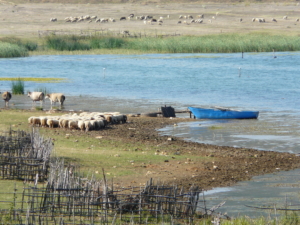This article was published in the Knowledge & Management of Aquatic Ecosystems journal.
You can access to it on the Tour du Valat web documentary portal.

Abstract:
Freshwater fish declines are triggered by a suite of anthropogenic threats, including habitat degradation, climate and land use change, biological invasions, pollution and overfishing. Robust monitoring schemes are needed to understand and detect any effects of different factors on freshwater fish abundance and to be able to predict and respond to potential stressors. Here, we used standardized biomass-per-unit-effort (BPUE) data deriving from gillnet sampling over a 34-year period in the two Prespa Lakes and determined species trends using general additive models coupled with structural change models. Furthermore, the influence of seven environmental variables was assessed for each fish species using an analytical approach based on random forests. We showed that the total annual BPUE is increasing in Lake Mikri Prespa whereas it is stable in Megali Prespa and that the relative BPUE of introduced species in the former is increasing through the years. Differences in the lakes’ trophic status were reflected in species trend patterns. Random forests showed that air temperature, the introduction of the invasive Lepomis gibbosus, predation and water management played a role in shaping species biomass in Mikri Prespa whereas abiotic factors are the main drivers of biomass changes in Megali Prespa. Our results provide empirical evidence on the importance of long-term monitoring in distinguishing between direct and indirect effects of large-scale stressors on fish abundance as well as insights towards sustaining the integrity of fish communities.
Bibliographical reference: Bounas A, Catsadorakis G, Koutseri I, Nikolaou H, Nicolas D, Malakou M, Crivelli AJ. 2021. Temporal trends and determinants of fish biomass in two contrasting natural lake systems: insights from a spring long-term monitoring scheme. Knowl. Manag. Aquat. Ecosyst., 422, 28.